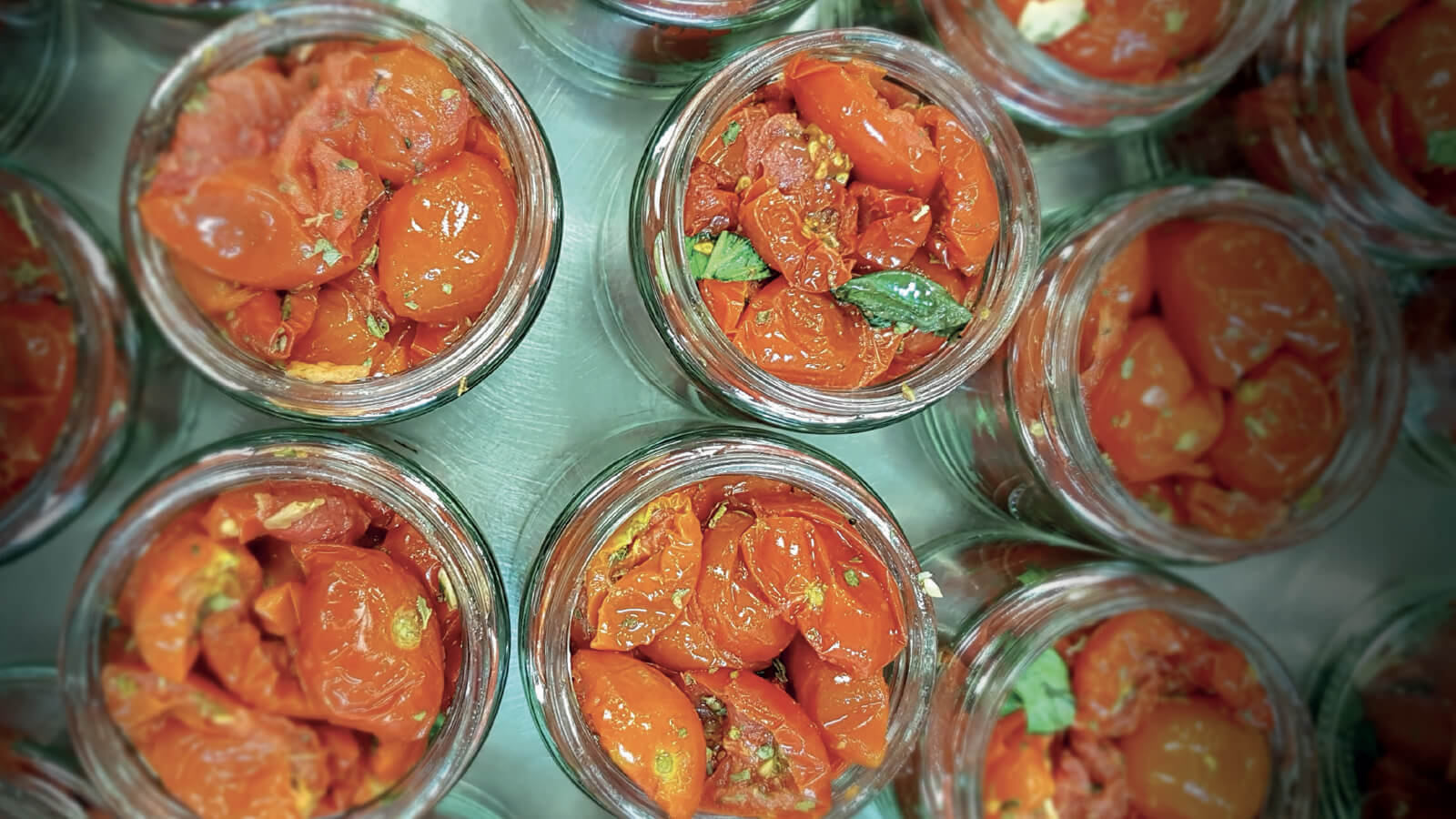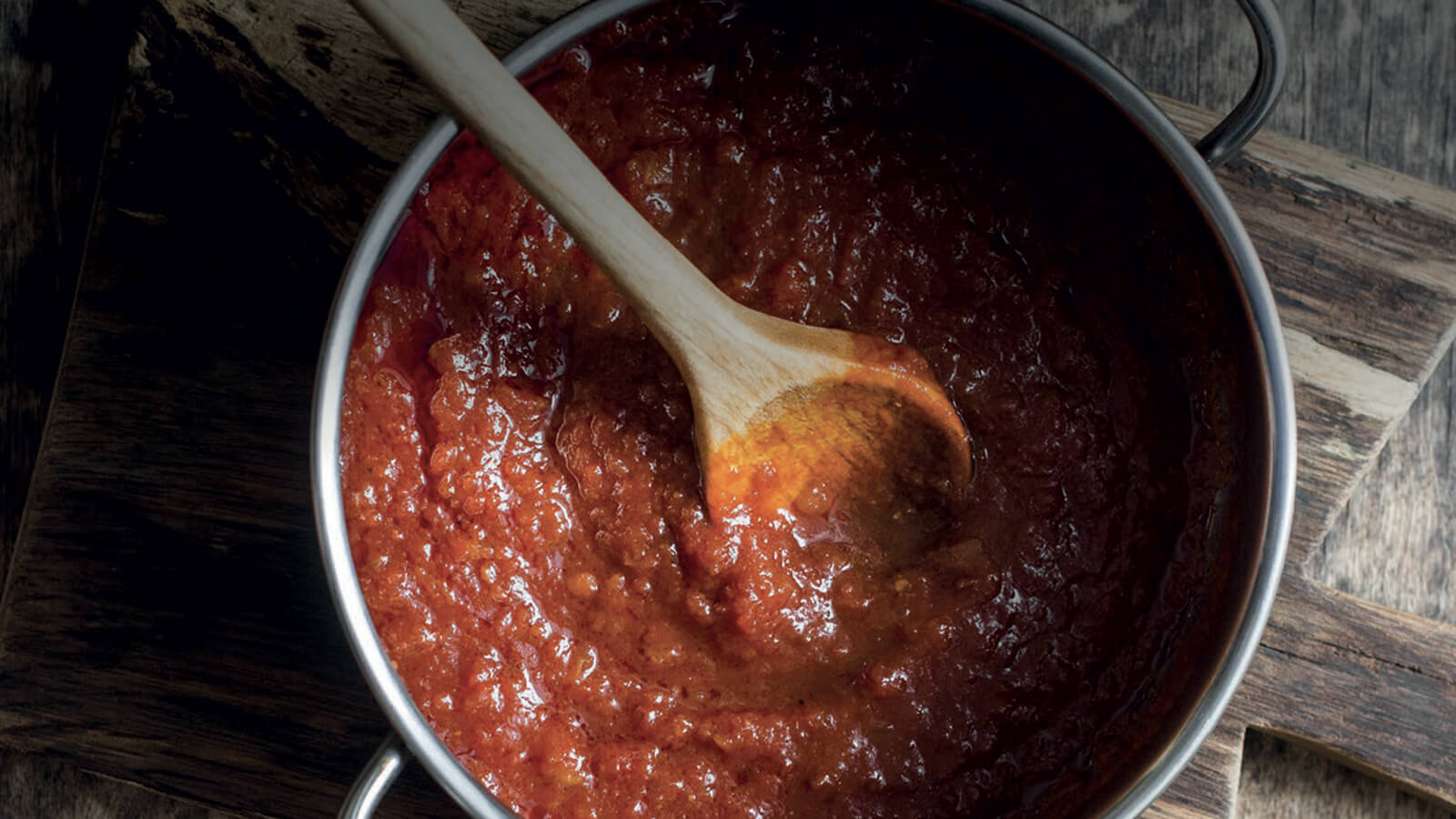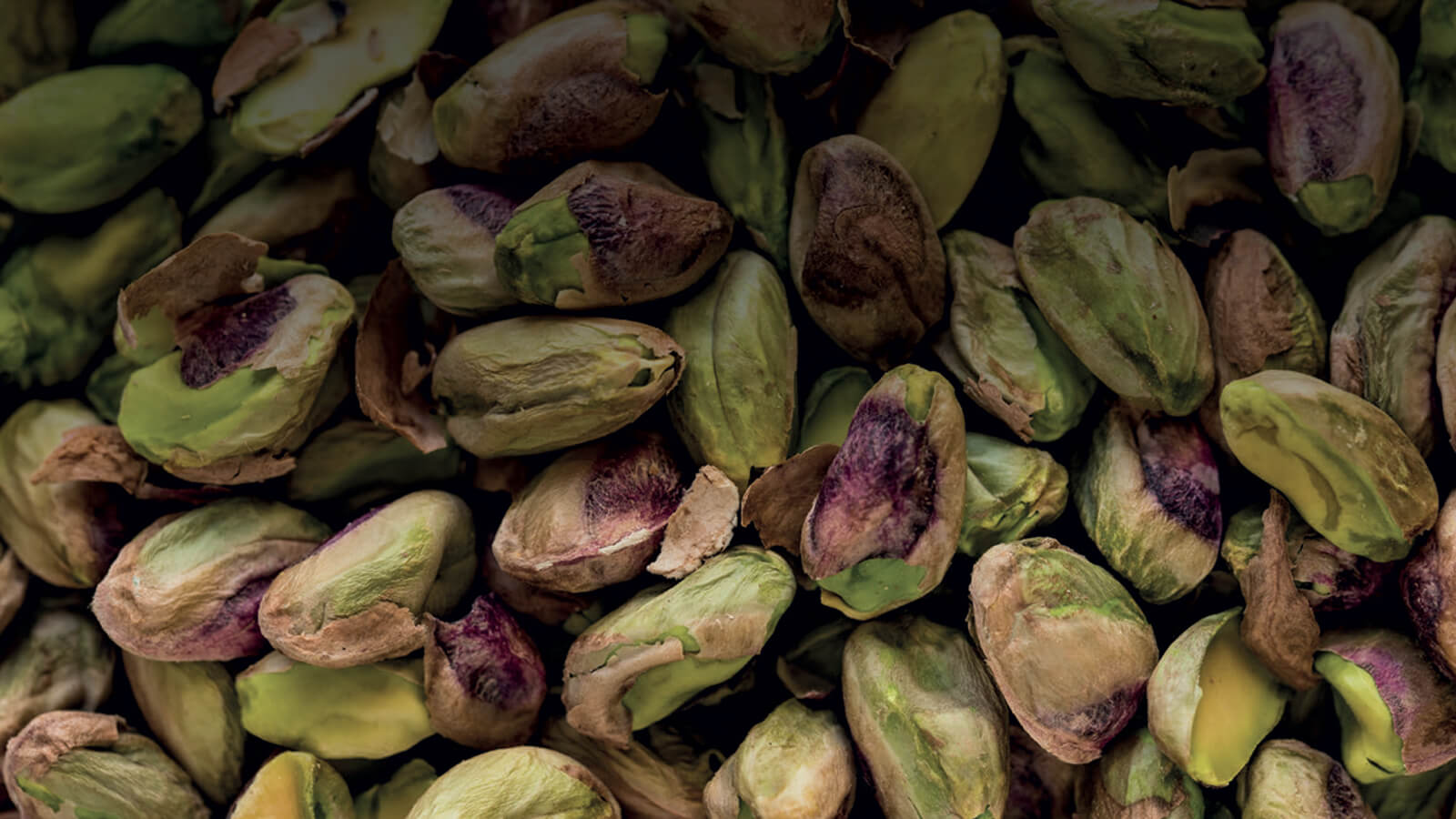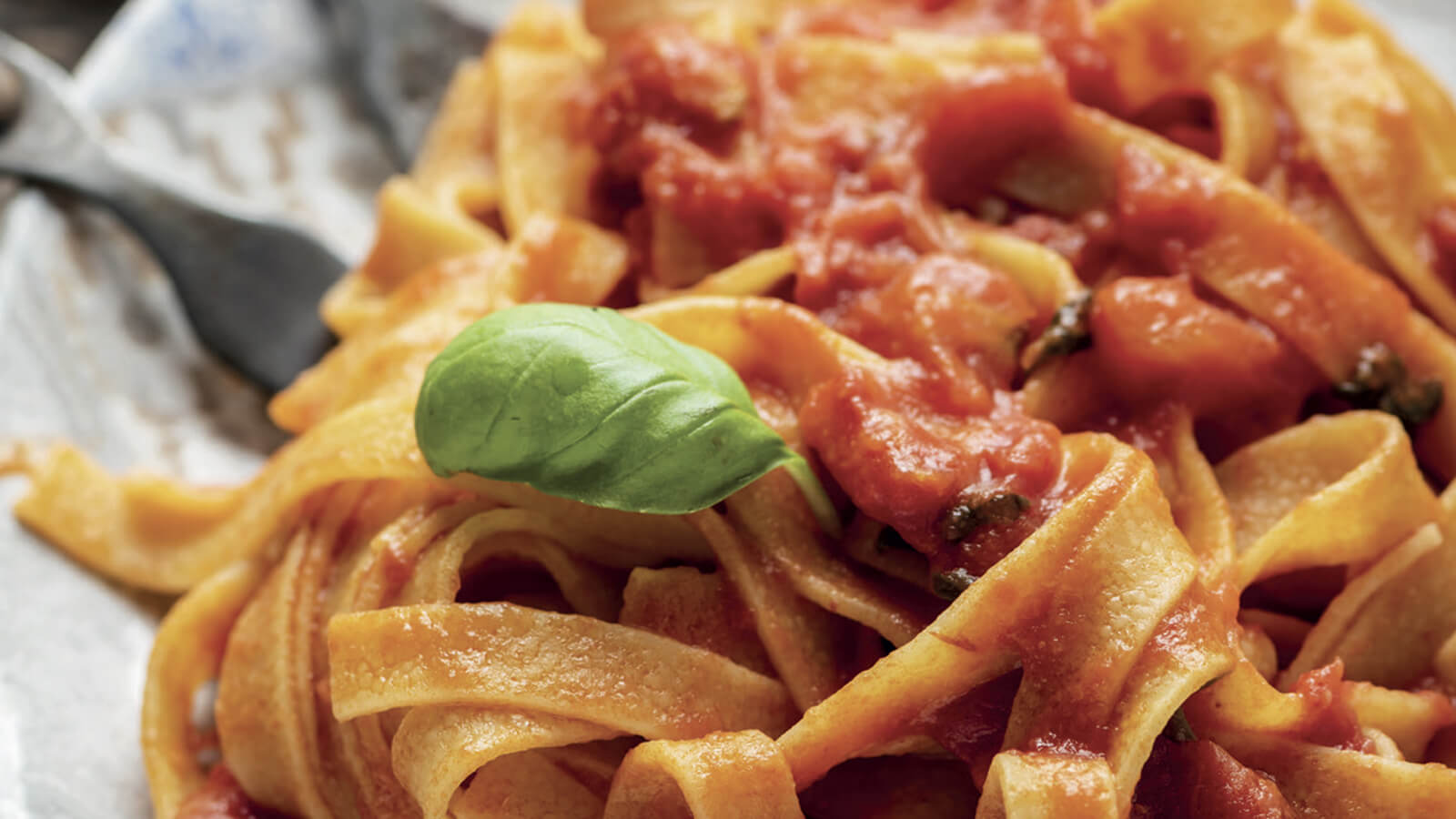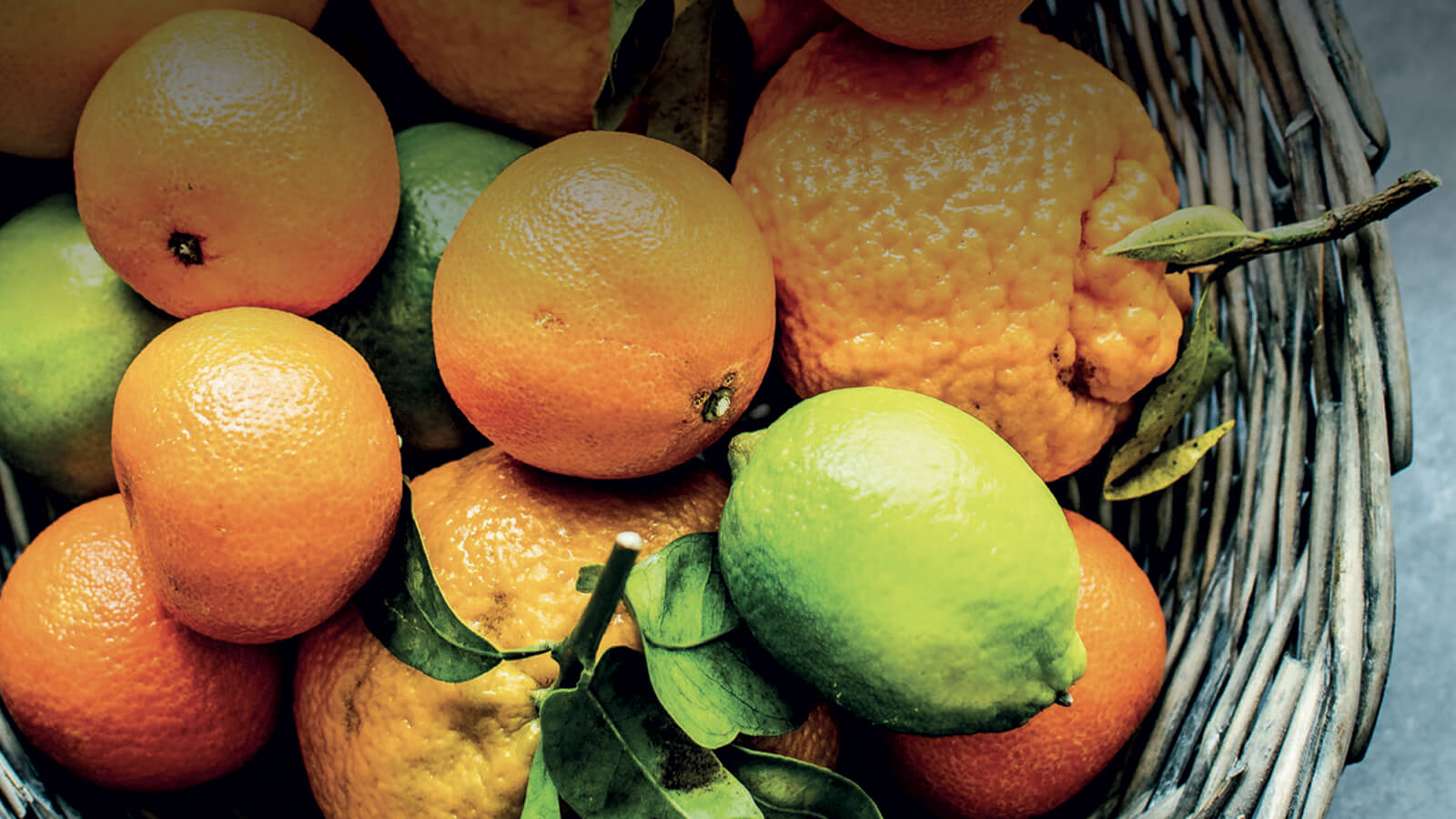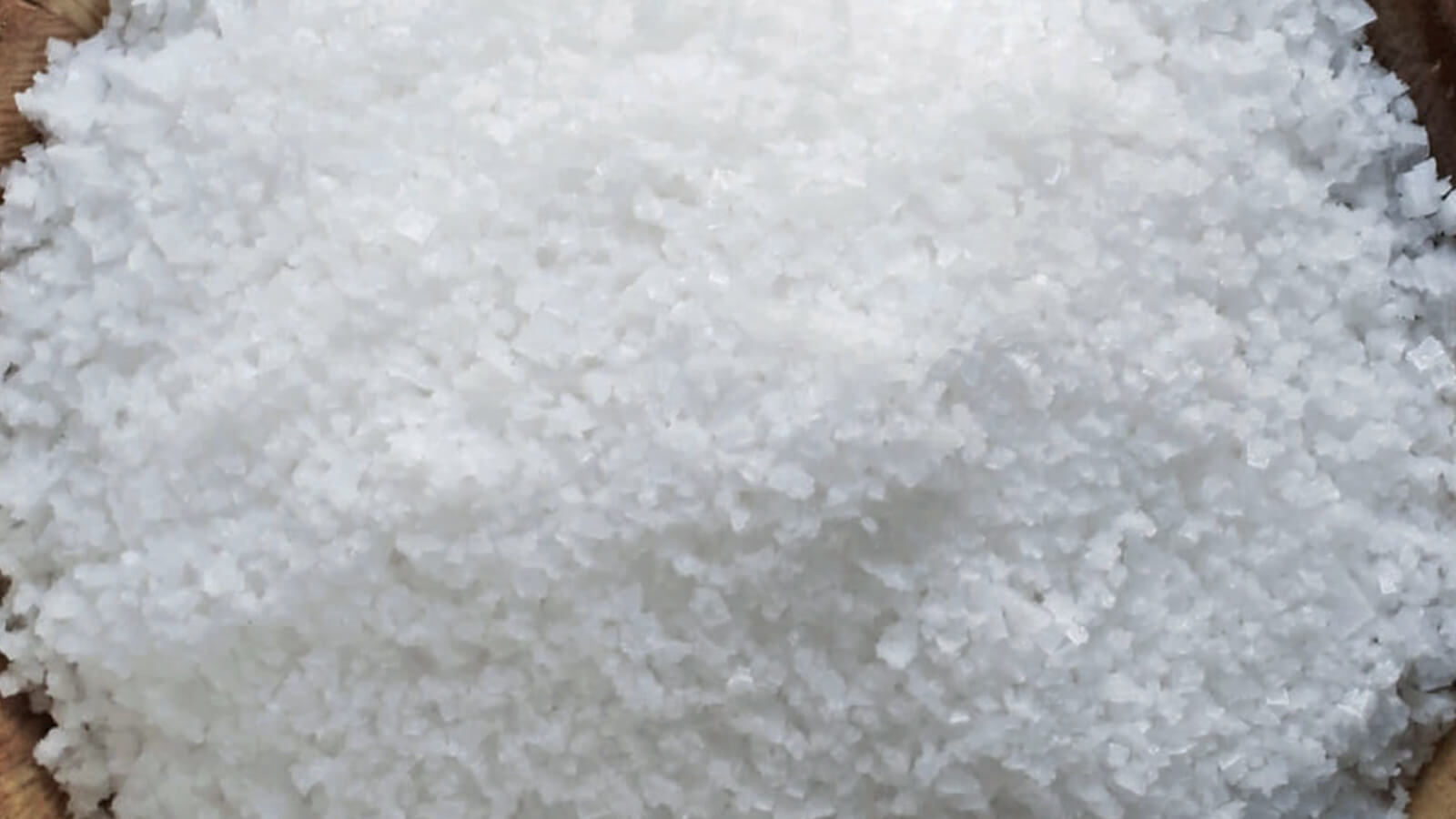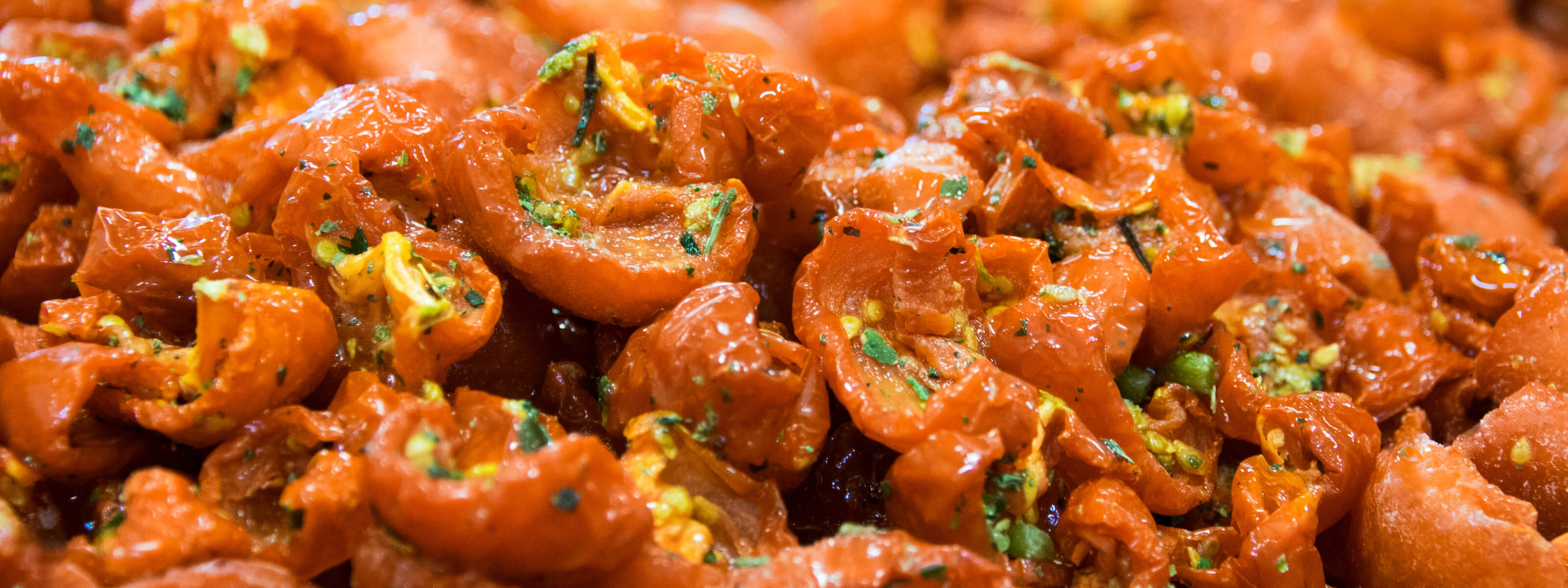Curiosities from the oil mill
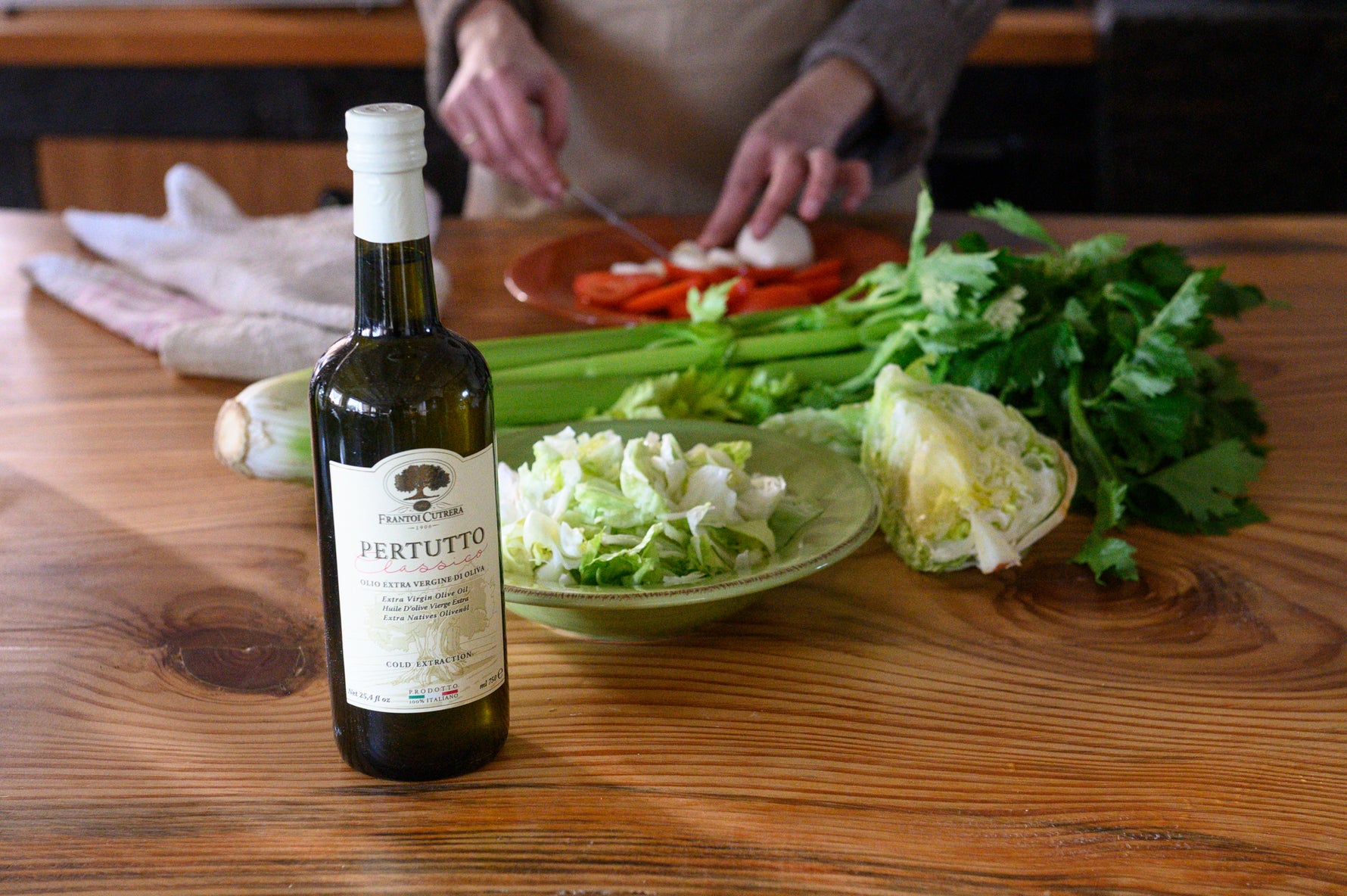
Olive oil for frying: advantages and advice
on May 20 2024
Introduction to olive oil
In this article we will delve into the importance of olive oil as a preferred choice for frying. Olive oil is an essential ingredient in Mediterranean cuisine and is prized for its rich flavor and health-promoting properties. Knowing the different varieties of olive oil and their culinary uses can help us make informed choices in the kitchen.
The different varieties of olive oil
Extra virgin olive oil : is the highest quality variety of olive oil, obtained directly from olives and cold processed. It is ideal for raw condiments and for dishes that require a finishing touch of quality.
Virgin olive oil : of slightly lower quality than extra virgin, but still suitable for use raw and for cooking at low temperatures.
Refined olive oil : it has undergone a refining process to improve its flavor and stability in cooking, and is particularly suitable for frying at high temperatures.
Culinary uses of olive oil
Light frying : extra virgin olive oil is excellent for frying light foods such as vegetables, eggs and fish, giving them a characteristic and delicious flavour.
Deep frying : Refined olive oil is an ideal choice for high-temperature frying, such as French fries, as it maintains its properties stable even when in contact with intense heat.
Remembering this information will allow us to make the most of the different varieties of olive oil in our culinary preparations, guaranteeing both maximum flavor and maximum benefit for our health.
The benefits of olive oil for your health
Using olive oil for frying has significant benefits for our health. Here's why you should consider this beneficial change in your diet:
Rich in antioxidants: Olive oil is rich in antioxidants, such as vitamin E and polyphenols, which help fight oxidative stress in our body.
Protects the heart: The monounsaturated fatty acids present in olive oil help reduce bad cholesterol in the blood, thus protecting the heart from cardiovascular diseases.
Anti-inflammatory: Olive oil contains compounds that have anti-inflammatory properties, useful in fighting inflammation in our body.
Improves brain health: Thanks to its essential fatty acids, olive oil can help improve cognitive function and protect the brain from aging.
Regulates blood sugar level: Using olive oil can help regulate blood sugar levels, helping those with diabetes better manage their condition.
Anti-cancer substance: Some research suggests that compounds found in olive oil may have anti-cancer properties, offering additional protection against this disease.
Remember that choosing a high-quality olive oil and using it correctly in your culinary preparations can bring numerous benefits to your long-term health.
How to choose the right olive oil for frying
When it comes to choosing olive oil for frying, there are a few factors to take into consideration to ensure you get the best results. Here are some helpful tips:
Type of olive oil : For frying, it is advisable to use an olive oil of a higher category than those used for dressings or light cooking. Extra virgin olive oil is an excellent choice for frying thanks to its low smoke point and presence of antioxidants.
Smoke point : The smoke point of the oil indicates the maximum temperature to which it can be heated without burning. For frying, it is important to choose an oil with a high smoke point to prevent it from degrading during cooking. Extra virgin olive oil has a smoke point high enough to hold up well to frying.
Aroma and flavor : Although extra virgin olive oil offers exceptional flavor and aroma, it is important to keep in mind that the flavor may be altered during frying. Therefore, it may be more convenient to use a mid-range olive oil for frying, in order to save on cost without compromising too much on flavor.
Quantity : Make sure you use enough oil to completely submerge the foods you are frying. Too little oil could cause uneven and less crisp cooking.
Always remember to check the labels and information on olive oil before using it for frying, to ensure you are making the best choice for your fried dishes.
Practical guide to using olive oil for frying
In our practical guide, we will give you important advice on using olive oil for frying correctly:
Olive Oil Selection : Make sure you opt for a high-quality olive oil with an appropriate smoke point for frying.
Temperature : We keep the oil temperature constant during frying to avoid overheating which could compromise the properties of the oil.
Quantity : We use the right amount of oil to fry foods evenly without overloading the pan.
Type of cooking : We prefer to fry foods with extra virgin olive oil over medium heat to ensure crispy and tasty frying.
Storing Used Oil : Did you know that after use, you can filter olive oil to remove any residue and reuse it?
As a reminder, although olive oil is an excellent choice for frying thanks to its antioxidant properties and unique flavor, it is important to follow these guidelines carefully to achieve optimal results in the kitchen.
Olive oil versus other types of frying oils
When it comes to choosing an oil for frying, it is important to consider the benefits of olive oil over other types of oils. Here's why we prefer olive oil for frying:
Smoke point : Olive oil has a higher smoke point than other vegetable oils, meaning it can reach higher temperatures without burning. This makes it ideal for frying, as it retains its nutritional properties.
Health : Olive oil is rich in monounsaturated fats which are considered healthier than the saturated fats found in other oils. This can help reduce the risk of heart disease and inflammation.
Antioxidants : Olive oil contains antioxidants that help protect cells from damage caused by free radicals. This can have long-term health benefits.
Flavor : Olive oil adds a delicious flavor to fried foods, thanks to its richness and complexity. It is particularly appreciated in Mediterranean cuisine.
Versatility : In addition to being great for frying, olive oil can also be used for dressing salads, marinating meat and fish, and even for baking.
When we compare olive oil to other types of frying oils, we can clearly see the benefits it offers in terms of health, flavor and versatility. Try replacing your regular oils with olive oil in your next frying session and enjoy the benefits!
Tips for maximizing the benefits of olive oil in cooking
We recommend following these tips to maximize the benefits of olive oil when preparing food:
Choosing the right olive oil: Let's make sure to use a high-quality olive oil with low acidity to ensure delicious flavor and maximize health benefits.
Use moderate temperatures: We avoid overheating olive oil, as temperatures that are too high can compromise its nutrients and flavor. We recommend frying at temperatures between 130°C and 180°C for best results.
Avoid reusing oil: We do not reuse olive oil for frying more than once. Reuse can lead to the formation of harmful substances and compromise the flavor of foods.
Choosing the right food: We opt for fresh, high-quality food when frying with olive oil. Good quality ingredients match the flavor of olive oil better and maximize the nutritional benefits.
Drain food properly: After frying, make sure to drain the food on paper towels to remove excess oil. In this way, we make the dish lighter and crispier.
Store properly: We store olive oil in a cool, dark place to preserve its antioxidant properties and flavor. We avoid exposure to light and heat and prefer dark or glass containers.
By following these tips, we can make the most of the benefits of olive oil in the kitchen, obtaining delicious and healthy dishes.
Tasty recipes to cook with olive oil
We love experimenting in the kitchen and creating delicious dishes using olive oil as the main ingredient. Here are some tasty recipes you can try to enrich your culinary repertoire:
Bruschetta with olive oil : Toast slices of bread, then cover them with diced cherry tomatoes, fresh basil, garlic and, of course, plenty of extra virgin olive oil.
Greek salad : Prepare a mix of cucumbers, tomatoes, olives, feta, red onion and chili peppers, season everything with olive oil, lemon juice, salt and oregano.
Pasta with garlic, oil and chilli : Simple and tasty, just cook some spaghetti al dente and season with chopped garlic, chilli, parsley and generous olive oil.
Grilled vegetables : Cut courgettes, aubergines, peppers and tomatoes into slices, then grill them and season them with salt, pepper and a splash of extra virgin olive oil.
Lemon and olive oil cake : Prepare a dough with flour, sugar, eggs, yeast, grated lemon zest and olive oil for a unique and fragrant dessert.
Experiment in the kitchen and be inspired by the thousand nuances that olive oil can give to your dishes!
Myths to dispel about using olive oil for frying
Regarding the use of olive oil for frying, there are some myths that are important to dispel:
Olive oil is not suitable for high temperatures: In reality, olive oil has a fairly high smoke point and can be used for frying at moderate temperatures without degrading.
Olive oil becomes harmful when heated: This is not true if the right cooking temperatures are respected. Olive oil is stable and does not become harmful if used correctly for frying.
Frying with olive oil makes food too greasy: By using olive oil in the correct amount and at the correct temperature, the food will not be greasier than if it had been fried with other types of oils.
Olive oil loses its healthy properties when frying: Even though some antioxidants may be reduced during cooking, many health benefits remain.
Frying with olive oil can be an excellent choice for healthy and tasty cooking, as long as you follow some precautions in choosing the type of oil, cooking temperatures and methods of use.
Maintenance and conservation of olive oil
Keeping olive oil in optimal condition is essential to preserving its freshness and flavor. Here are some helpful tips for maintaining and storing olive oil:
Protected from light: Store olive oil in a dark place or in dark bottles to protect it from light, which can cause it to oxidize.
Away from heat: Avoid exposing olive oil to heat sources and keep the bottle in a cool, dry place to preserve its properties.
Ermetic closure: Be sure to close the bottle tightly after each use to prevent air from entering, which could speed up the deterioration process of the oil.
Use dark glass or stainless steel containers: Prefer dark glass bottles or stainless steel cans to store olive oil, as they better protect the product from light and oxidation.
Check the expiry date: Always check the expiry date on the olive oil label and consume it within that period to ensure you enjoy a quality product.
Avoid exposure to air: Reduce the olive oil's exposure to the air inside the bottle by using an airtight cap and pouring carefully to prevent air from entering during use.
By following these maintenance and storage practices, we can ensure that we keep the benefits and flavor of olive oil intact for a longer period.
Conclusions and final considerations on olive oil
We've found olive oil to be an excellent choice due to its antioxidant properties and high smoke point. By using olive oil for frying, we can obtain crispy and tasty foods without compromising our health.
Additionally, we learned that olive oil is rich in monounsaturated fats, which can help reduce the risk of cardiovascular disease and keep cholesterol levels low. This makes it a healthier choice than other vegetable oils commonly used for frying.
Furthermore, olive oil is a renewable and sustainable resource, which guarantees stable production over time without compromising the environment. This means that we can enjoy our favorite dishes, knowing that we are making a responsible choice for our well-being and for the planet.
Finally, we remember that it is important to choose a high quality olive oil, preferring extra virgin ones, to ensure you obtain all the benefits and authentic taste that this precious ingredient can offer. Thanks to its versatility and unique properties, olive oil remains a pillar of Mediterranean cuisine and a valuable choice for healthy and tasty frying.
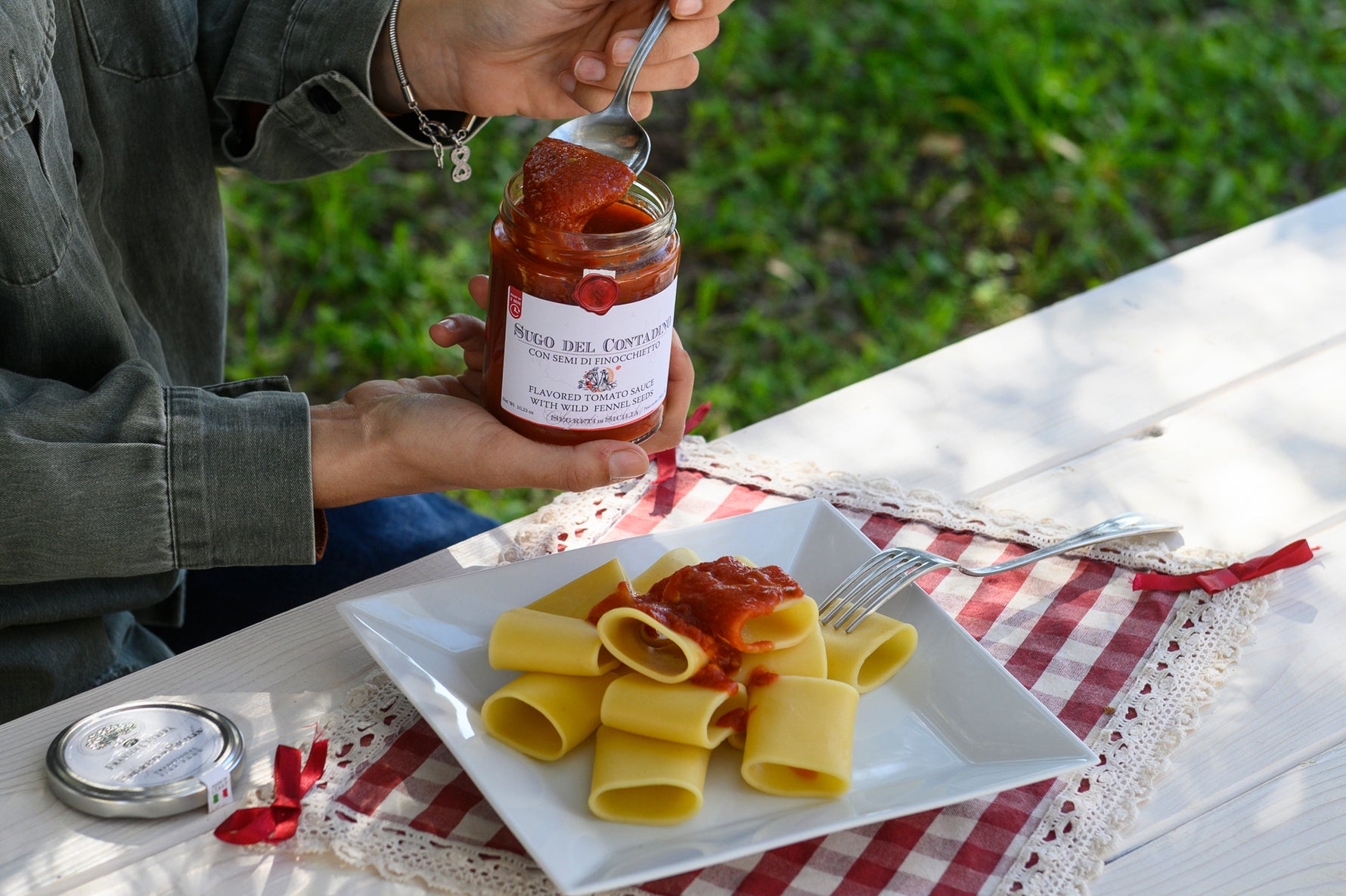
Sicilian sauces: traditional recipes
on Apr 15 2024
Introduction to traditional Sicilian sauces
In our exploration of the best Sicilian sauces to enjoy in all seasons, it is essential to begin with an Introduction to traditional Sicilian sauces. Sicilian cuisine is renowned for its richness of flavor and the way it combines simple ingredients into extraordinarily delicious dishes.
caponata
Caponata is a sauce made from aubergines, celery, tomatoes, onions, green olives, capers and pine nuts. This preparation is a riot of flavors that blend harmoniously into a rich and tasty dish. At Frantoi Cutrera you can also find its variant based on artichokes .
Pesto sauce in the Trapani's style
Trapani pesto is a Sicilian variant of classic pesto, made with dried tomatoes, almonds, basil, extra virgin olive oil and pecorino cheese. Its intense flavor and creamy consistency make it ideal for seasoning pasta.
Sicilian ragù
Sicilian ragù is a thick, rich condiment prepared with beef, sausage, tomatoes, onions, celery and carrots. It is traditionally served with fresh pasta such as tagliatelle or semolina pasta.
In Sicily, the preparation of sauces is an art passed down from generation to generation, with each family jealously guarding their secret recipes. Combining high-quality ingredients and culinary passion, Sicilians create dishes that capture the essence of the region in every bite.
The story behind Sicilian sauces
Sicilian sauce recipes have deep roots in the history of the island and reflect the influence of the various civilizations that have governed Sicily over the centuries. This extraordinary culinary tradition expertly mixes native ingredients with exotic spices from distant lands.
The Arabs: During the period of Arab domination in Sicily, ingredients such as saffron and raisins were introduced, which give Sicilian sauces a unique and refined flavor. Furthermore, the Arabs introduced the concept of sweet and sour, which has become a distinctive feature of many Sicilian sauces.
The Normans: With the arrival of the Normans, Sicilian cuisine underwent further influences. Ingredients such as cinnamon and black pepper were introduced, adding depth and complexity to Sicilian sauces. Furthermore, the Normans brought the use of dried fruit and citrus fruits, which are often present in many traditional recipes.
The Spanish: During Spanish rule, various preservation techniques were introduced, such as the use of olive oil and anchovies in oil. These ingredients have become pillars of Sicilian cuisine and are often used to prepare rich and tasty sauces.
Today: Today, Sicilian cuisine continues to evolve, but the historical roots of the sauces remain solid. The recipes handed down from generation to generation tell the fascinating story of an island rich in flavors and culinary traditions unique in the world. Let yourself be transported back in time as you savor the delicious Sicilian sauces that tell centuries of history in every bite.
Key ingredients for authentic Sicilian sauces
When creating Sicilian sauces, we use fresh, high-quality ingredients to ensure an authentic and delicious flavour. Here are some of the key ingredients that cannot be missing to prepare traditional Sicilian sauces:
Fresh Tomatoes : We use ripe, juicy tomatoes to create the base of our Sicilian sauces. Sicilian tomatoes, such as cherry tomatoes or those of the datterino type, provide a sweet and intense flavor. You can find different varieties and types of Sicilian tomatoes in our shop.
Fresh basil : Basil is a fundamental aromatic herb in Sicilian sauces. Its fresh and strong aroma adds a touch of freshness to our dishes.
Onions and garlic : Sweet onions and fresh garlic cloves are essential ingredients for creating the aromatic base of Sicilian sauces. They allow us to give depth of flavor to our dishes.
Anchovies and sardines : Anchovies and sardines are blue fish widely used in Sicilian cuisine to add a salty flavor and unique aroma to sauces.
Pine nuts and raisins : Toasted pine nuts and raisins soaked in vinegar are typical ingredients of Sicilian sauces that add a crunchy and sweet note to our dishes.
Pecorino and ricotta : Sicilian cheeses such as pecorino and fresh ricotta are often used to enrich sauces with creaminess and flavor.
Chili pepper and cinnamon : Spicy chili pepper and ground cinnamon are spices that give a warm and enveloping touch to our Sicilian sauces, creating a unique balance of flavors.
With the use of these authentic and genuine ingredients, we are able to prepare Sicilian sauces that pass down tradition and passion for local cuisine.
Classic recipe for sauce alla norma
We Sicilians love to celebrate the culinary tradition of our land through dishes rich in flavor and history. One of the most loved recipes is certainly the sauce alla norma , a condiment that brings with it all the authenticity and taste of Sicilian cuisine.
Ingredients:
Purple aubergines: 2
Extra virgin olive oil: 4 tablespoons
Peeled tomatoes: 400g
Fresh basil: to taste
Salt to taste
Pepper as needed
Salted ricotta cheese: 100g
Spaghetti: 320g
Method:
To start, we cut the aubergines into cubes and place them in a bowl with plenty of salt for about half an hour. This step serves to eliminate the typical bitterness of aubergines.
After letting the aubergines rest, rinse them under running water and dry them carefully.
In a large pan, heat the extra virgin olive oil and add the aubergines. Cook until they become soft and golden.
Add the peeled tomatoes and a pinch of salt, cook over low heat for about 20 minutes.
In the meantime, boil the spaghetti in plenty of salted water.
Once the spaghetti is cooked, drain it and season it with the standard sauce.
Before serving, add fresh basil leaves and grated ricotta salata cheese.
Thus, by preparing and enjoying this dish together, we will celebrate the love for Sicilian cuisine and its traditions handed down from generation to generation. Enjoy your meal! If you don't have the time or way to prepare the traditional Sicilian sauce alla norma, you can find it prepared by us by clicking here .
Secrets for a perfect Sicilian tomato sauce
We love preparing Sicilian tomato sauce following some secrets that make the dish even more irresistible. Here are our recommendations:
Use fresh, ripe tomatoes : the secret of a good tomato sauce lies in the quality of the ingredients. We choose Italian tomatoes, preferably in season, to obtain an authentic flavour.
Brown the garlic and onion slowly : before adding the tomatoes, fry the garlic and onion in extra virgin olive oil over a low heat. This step will give the sauce a rich and enveloping flavour.
Add fresh basil at the end of cooking : to preserve the fresh aroma of the basil, we add it only at the end of the preparation, stirring delicately to blend the flavors.
Adjust the sauce with a pinch of sugar : if the tomatoes tend to be too acidic, add a pinch of sugar to balance the flavors and make the sauce more balanced.
Cook over low heat : let the tomato sauce simmer over low heat for at least an hour, stirring occasionally. This way, the flavors will concentrate and the sauce will become tastier.
By following these secrets, we will be able to prepare a Sicilian tomato sauce that will conquer the palate of anyone who tastes it.
The tasty sardine sauce
In Sicily, sardine sauce is a traditional dish prepared with simple ingredients but with an intense flavour. The family recipe that we have passed down from generation to generation involves starting by carefully cleaning the sardines, removing the bones and the head, and then marinating them in a mixture of lemon juice, parsley and garlic. While the sardines rest, prepare a sauté with onion, celery and fennel which will flavor the sauce.
"The aroma wafting through the kitchen as the sardine sauce slowly cooks is simply irresistible."
We add fresh peeled tomatoes, toasted pine nuts, raisins, saffron and black pepper to create a mix of flavors that blend delicately. When the sauce has reached the right consistency, add the marinated sardines and let everything cook over a low heat until the fish is soft and tasty.
We marinate the sardines in lemon juice, parsley and garlic
Let's prepare a sauté with onion, celery and fennel
We add fresh peeled tomatoes, toasted pine nuts, raisins, saffron and black pepper
Add the sardines to the sauce and cook slowly
Sardine sauce is a dish that embodies the genuine Sicilian tradition, a combination of flavors that blend harmoniously into a unique and irresistible dish. Definitely worth trying in every season, to savor a piece of Sicily through a tasty culinary journey. If you're already hungry, at Frantoi Cutrera you can find various fish-based sauces in our Sauces category.
Regional variations of Sicilian sauces
The regional variations of Sicilian sauces offer a culinary journey through the different traditions and tastes of the island. From Trapani to Catania, from Palermo to Syracuse, each area has its own peculiarities and recipes handed down from generation to generation. Here are some regional variations of Sicilian sauces that are worth tasting:
Trapani sauce :
Typical ingredients include fresh tomatoes, almonds, basil and garlic.
The consistency is dense and rich, perfect for seasoning short pasta such as busiate or casarecce.
Catanese sauce :
A sauce made with tomato, fried aubergines, salted ricotta and fresh basil.
A perfect combination of flavors that represents the Catania culinary tradition.
Palermo-style sardine sauce :
Prepared with wild fennel, breadcrumbs, raisins and pine nuts.
A mix of flavors that recalls the Arab influences in Sicilian cuisine.
Syracuse sea urchin sauce :
A seafood concentrate prepared with fresh sea urchins, garlic, parsley and chilli pepper.
A delicious dish that celebrates the Syracuse coast.
Tasting these regional variations of Sicilian sauces will allow you to immerse yourself in the culture and culinary traditions of the island, offering a tasty and authentic experience. Enjoy your meal!
How to use Sicilian sauces in the kitchen
We love experimenting in the kitchen and Sicilian sauces offer a wide range of possibilities to create tasty dishes in all seasons. Here are some ideas on how to best use them:
Pasta with tomato and tuna sauce : Boil the pasta al dente and add it to the tomato sauce seasoned with tuna, capers and olives. A classic combination that will make you feel like you are in Sicily. We prepare a mouth-watering version! Discover it by clicking here.
Rolls with sauce alla norma : Prepare meat rolls stuffed with fried aubergines, cheese and ham. Cook them in the sauce alla norma, rich in tomato and aubergines, for a dish full of flavours.
Swordfish with lemon and almond sauce : Sauté slices of swordfish and blend them with a sauce made with lemon, parsley and chopped almonds. A light and tasty dish perfect for summer.
Meatballs with tomato and mint sauce : Prepare meatballs flavored with fresh mint and serve them with a slightly spicy tomato sauce. A tasty alternative to classic meatballs with sauce.
Experiment with Sicilian sauces in the kitchen and be inspired by the culinary traditions of this magnificent Italian region!
Tips for storing homemade sauces
When we prepare our delicious homemade Sicilian sauces, we want to make sure that they keep their incredible flavors intact even in the following days. Here are some tips on how to best preserve homemade sauces:
Cooling down:
Wait for it to cool completely: Before storing sauces, make sure they have cooled completely to room temperature.
Suitable containers:
Airtight containers: Transfer the sauce to airtight glass or plastic containers to maintain freshness.
Individual portions: If you prepare a large quantity of sauce, dividing it into individual portions will allow you to defrost only as much as necessary.
Freezing:
Freeze correctly: If you want to preserve the sauce for a longer period, freezing is the best solution. Be sure to freeze the sauce in suitable containers and label them with the preparation date.
Quick consumption:
Within a few days: Fresh homemade sauces are best consumed within 2-3 days. Be sure to consume them quickly to fully appreciate the flavor.
By following these simple tips, you will be able to enjoy your delicious homemade sauces for a long time.
Conclusions and next steps
We traveled through the scents and flavors of Sicilian cuisine, discovering traditional and tasty recipes to prepare sauces that will delight the palate in every season. Now that we've learned how to create some of the island's most iconic dishes, we can put our culinary skills to use and delight family and friends with our favorite Sicilian dishes.
Here are some next steps we can take to continue our culinary journey through Sicily:
Exploring new recipes: Let's try experimenting with other Sicilian sauces, such as pesto alla trapanese or sugo alla norma, to broaden our culinary repertoire and discover new fascinating flavours.
Visit to local markets: To ensure we use the freshest and most authentic ingredients, we can visit local markets to purchase typical Sicilian vegetables, spices and condiments.
Cooking courses: To deepen our knowledge of Sicilian cuisine, we can participate in specialized cooking courses that will teach us traditional techniques and the secrets for preparing delicious dishes.
Sharing our creations: We invite friends and relatives to taste our Sicilian dishes and share with them the culture and culinary tradition of the island, creating special and convivial moments.
The journey to discover Sicilian sauces has just begun. We continue to explore, savor and share the delights of the cuisine of this wonderful Italian region. Enjoy your meal!
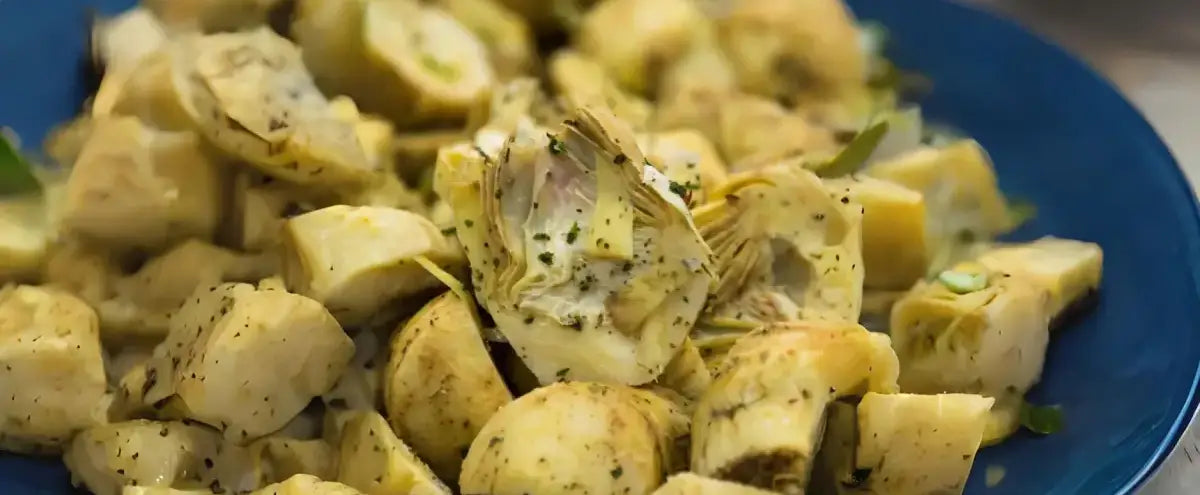
Violet artichoke: how to cook and enjoy this exquisite vegetable
on Dec 05 2023
The purple artichoke is a culinary delight loved by many for its distinctive flavor and versatility in the kitchen. This unique-looking vegetable has a fascinating history, offers numerous nutritional benefits, and can be prepared into multiple delicious recipes. Let's explore the world of the purple artichoke together, discovering how to select it, prepare it, cook it and enjoy it best alone or in a delicious recipe.
Violet artichoke: introduction
The violet artichoke , also known as purple artichoke, is a variety appreciated for its compact head and deep purple leaves. These vegetables are an explosion of flavor when cooked correctly, giving a slightly sweet flavor and a characteristic herbaceous aftertaste that conquers the palates of connoisseurs. It is important to select fresh, firm artichokes, with compact and tightly closed leaves, to ensure they are of excellent quality. Before cooking the purple artichoke, it is essential to clean it carefully to remove any residues of earth and thorns.
History and origins of purple artichokes
The origins of the purple artichoke date back to ancient Rome, where it was considered a delicious food. It is said that it was appreciated for its culinary qualities and therapeutic properties, considered a symbol of abundance and well-being. Over the centuries, this delicacy has spread throughout the world, becoming a popular dish in many traditional cuisines.
Nutritional benefits of the purple artichoke
Purple artichokes are not only delicious, but also extremely beneficial for our health. This is why including them in our diet can bring several advantages:
Rich in antioxidant substances: Purple artichokes contain antioxidants that help fight oxidative stress in our body, reducing the risk of chronic diseases.
They promote liver health: Thanks to their purifying properties, artichokes can help protect and regenerate the liver, playing an important role in our overall health.
They support digestion: Artichokes are rich in fibre, which promote intestinal transit and help prevent digestive problems such as constipation or abdominal bloating.
They regulate cholesterol: Some studies suggest that artichokes may help reduce bad cholesterol levels in the blood, thus protecting heart health.
Incorporating the purple artichoke into our diet can therefore bring numerous benefits to our general health.
The different varieties of purple artichoke
There are various varieties of purple artichoke, each with its own unique characteristics and flavors. Some have larger, more compact heads, ideal for stuffing, while others are smaller and suitable for steaming or roasting.
How to select and preserve purple artichokes
When selecting purple artichokes, look for those with dense, tight leaves and a vibrant color. Avoid any that look wilted or have dark spots. It is important that the stems are fresh and robust. Store them in the refrigerator and use them within a few days to ensure optimal freshness.
Preparation and cooking of purple artichokes
Preparing purple artichokes may seem intimidating, but by following a few simple steps it becomes child's play. Remove the hardest outer leaves, cut off the thorny tips and then immerse them in acidulated water to prevent them from oxidising. They can be steamed, boiled, grilled or roasted until soft and delicious.
Delicious recipes with purple artichokes
Purple artichokes lend themselves to many recipes, from the classic grilled artichoke with olive oil and garlic, to stuffed artichokes with breadcrumbs, aromatic herbs and cheese. They can be added to salads, risottos, pizzas or pasta to give a touch of refinement to dishes. Here is an example of a recipe with purple artichokes to maximize their flavor.
Recipe: Grilled Violet Artichokes
Ingredients:
purple artichokes
Garlic
Parsley
Lemon juice
Extra virgin olive oil Frantoi Cutrera Biancolilla variety
Fine salt (Fior di Sale or lemon-flavoured sea salt)
black pepper
Instructions:
Clean the artichokes by removing the tough outer leaves and cut the top.
Soak the artichokes in cold water acidulated with lemon juice to prevent them from blackening.
Cook the whole artichokes in boiling water for about 10 minutes, then drain them and let them cool.
Cut the artichokes in half and remove the internal beard.
In a bowl, prepare a dressing with minced garlic, parsley, extra virgin olive oil, salt, black pepper and lemon juice.
Brush the artichokes with the sauce obtained. Heat a grill and cook the artichokes on the cut side for about 5-7 minutes, until they are golden and slightly crispy.
This simple and tasty recipe allows you to prepare delicious grilled artichokes, perfect as a side dish or appetizer.
Preparation of artichokes stuffed with minced meat
To prepare stuffed artichokes with minced meat, we start by cleaning the artichokes following the steps described previously.
Once the artichokes are ready, cook some minced meat in a pan with olive oil, garlic, onion and chopped parsley.
Add salt and pepper to taste and let it cook until the meat is well cooked and all the ingredients are blended.
At this point, fill the artichokes with the minced meat mixture and place them in a baking pan.
Add a little broth or water to the bottom of the pan to keep the artichokes moist while cooking in the oven.
Bake at 180°C for about 30-40 minutes, or until the artichokes are soft and the surface is golden.
Serve hot, perhaps garnished with a drizzle of extra virgin olive oil and a sprinkling of fresh chopped parsley.
Stuffed artichokes with minced meat are a rich and tasty dish, perfect to enjoy as a second course in a special lunch or on a festive occasion.
Pasta with purple artichokes and crispy bacon
We love preparing pasta with purple artichokes and crispy bacon for a dish full of flavors and contrasts. Here's how to make this delight in the kitchen:
Ingredients needed:
Pasta (preferably short)
Violet artichokes
Bacon
Garlic
Extra virgin olive oil
Fresh parsley
Chili pepper (optional)
Salt and pepper
Method:
Clean the purple artichokes, removing the hardest external leaves and cutting them into thin slices.
In a pan, brown the garlic in extra virgin olive oil, then add the cut artichokes and cook until soft.
In the meantime, cut the bacon into cubes and brown it in a pan until crispy.
Cook the pasta in abundant salted water and drain it al dente.
Combine the cooked artichokes with the crispy bacon and sauté everything in the pan to blend the flavors.
Add the pasta to the pan with the sauce and sauté for a couple of minutes.
Season with salt, pepper and, if desired, chilli pepper.
Serve the pasta with artichokes and crispy bacon, garnishing with chopped fresh parsley.
With this recipe, you can delight the palates of your guests with a dish with a rich and enveloping flavour.
Crispy fried artichokes
We love preparing crispy fried artichokes because they represent a tasty and irresistible side dish. Here's how we can create them by following a few simple steps:
Preparation of the artichokes: Let's start by cleaning the artichoke, removing the hardest external leaves until we get to the heart. Cut the artichoke into thin slices or quarters, depending on your preference.
Light batter: Prepare a light batter by mixing flour, water, salt and pepper. The consistency must be rather liquid to guarantee perfect crunchiness.
Breading and frying: Dip the artichoke slices in the batter, making sure they are well coated and then fry them in hot oil until they are golden and crispy.
Drainage and service: Once ready, we place the artichokes on absorbent paper to eliminate the excess oil and then we can serve them hot, perhaps adding a sprinkle of salt and a little fresh parsley.
With these simple steps we can enjoy delicious crispy fried artichokes that will be appreciated by all diners.
Pairing purple artichokes with other ingredients
Combining purple artichokes with other ingredients can lead to surprising flavor combinations. They go well with cheeses such as pecorino or parmesan, with cured meats such as raw ham, and with aromatic herbs such as parsley, basil or mint. And remember, it's always best to enjoy your purple artichokes with a drizzle of Frantoi Cutrera oil!
Tips for enjoying and serving purple artichokes
To fully enjoy the goodness of the purple artichoke, serve them hot and seasoned with a drizzle of extra virgin olive oil, lemon juice or a light sauce. More daring cooks can experiment with spices like black pepper, thyme or rosemary to further enhance the flavors.
The versatility and goodness of the purple artichoke
In conclusion, the purple artichoke is an extraordinary addition to the table, offering not only a rich and unique flavor but also significant nutrition. Experiment with different preparation techniques and recipes to discover the many possibilities this versatile vegetable has to offer. With its fascinating history, multiple nutritional benefits and its ability to enrich any dish, the purple artichoke certainly deserves a prominent place in the cuisine of those who love exploring new flavors and experimenting with ingredients. Whether combined with other delicacies or the protagonist of a main course, the purple artichoke never ceases to surprise and delight the palates of connoisseurs.



















